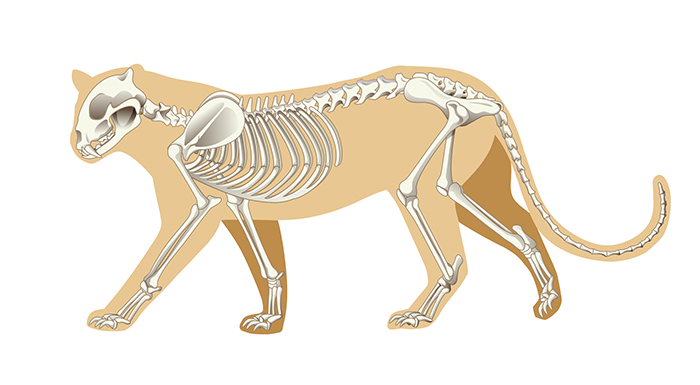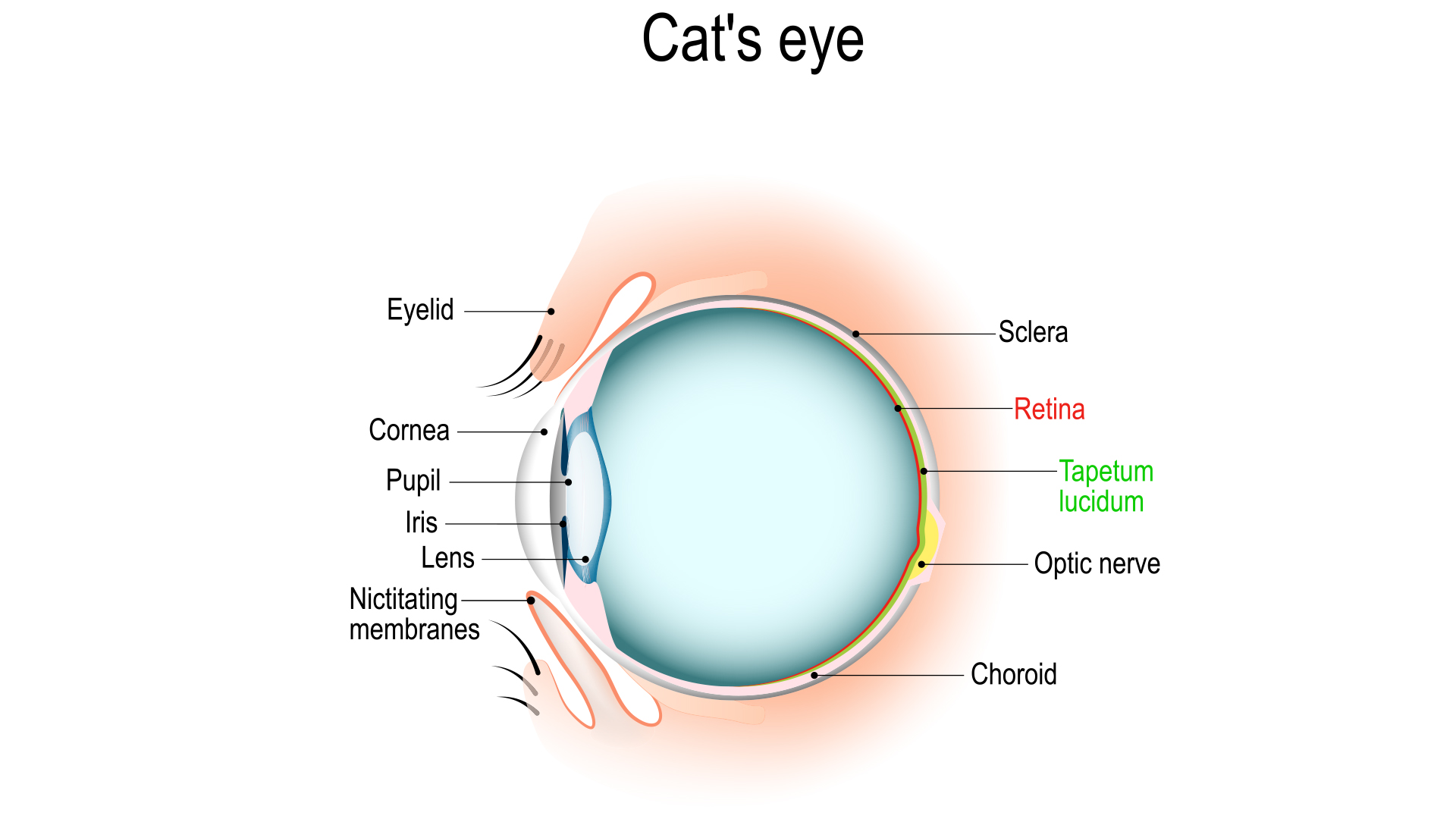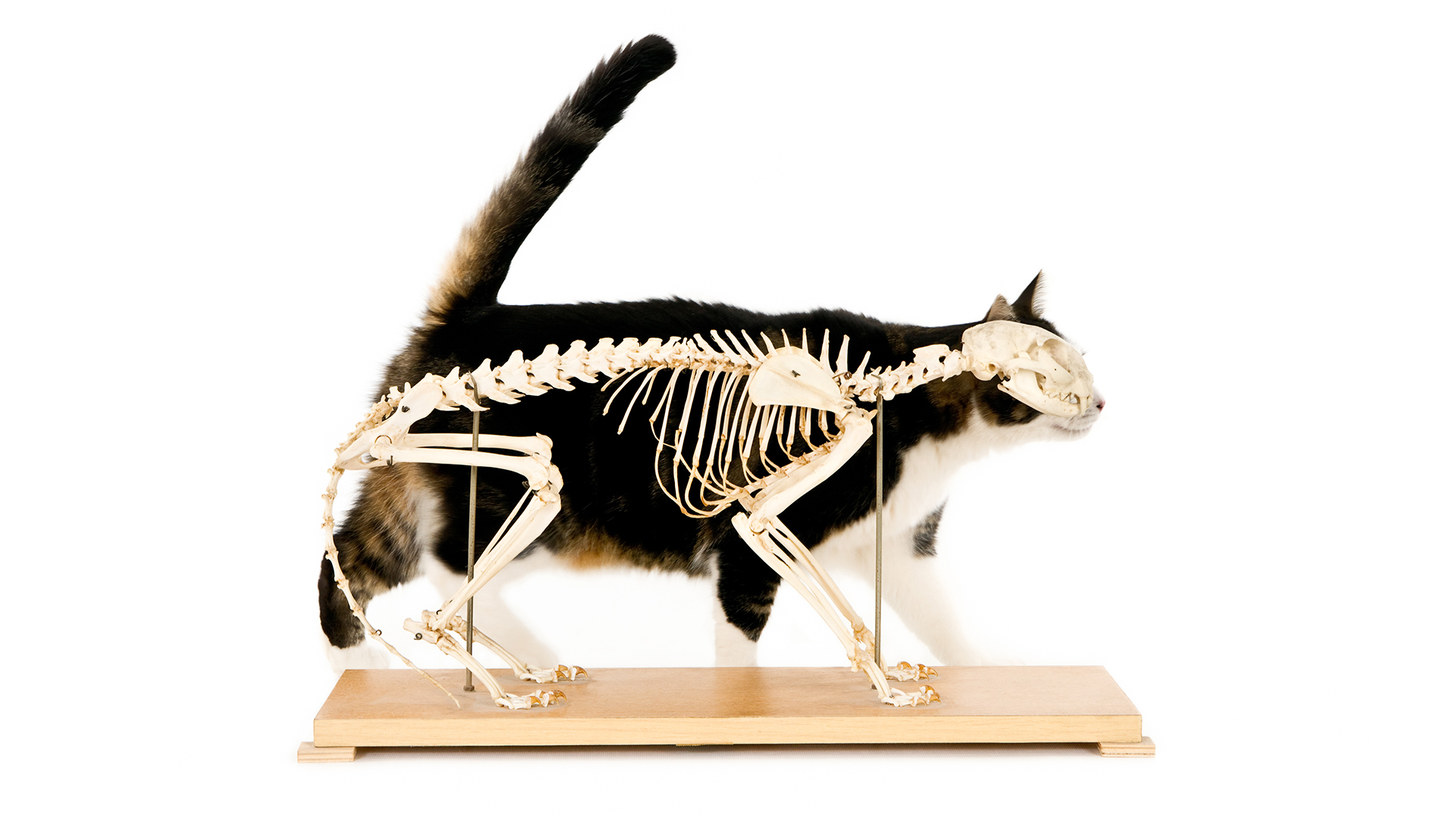Cat Anatomy & Cat Skeleton Explained

Our cats are not simply animal buddies we hang out with. They are essential parts of our families and our lives. It’s impossible to imagine life without our little munchkins. This is exactly why every time they seem to be behaving a little oddly, we feel panicked. However, if we know the unique idiosyncrasies of cat anatomy, we will be able to understand exactly what our little furry friends wish to tell us without having to depend on outside help.
Let’s find out all about the inimitable cat body structure and anatomy of cat organs to get a glimpse of what goes on inside our little darlings!
Cat Skeleton Anatomy
Let’s begin with the basics of cat anatomy.
The anatomy feline has a remarkably flexible skeleton. Kitties lack a collarbone. They have 7 cervical, 13 thoracic, 7 lumbar, 22-23 caudal vertebrae, and 3 sacral vertebrae.
Kitty tail length varies among breeds. Extra lumbar and thoracic vertebrae give them marvellous spinal flexibility for swift movements, and tails provide balance to the cat body structure. Their spine's shock-absorbing design has elastic discs between each vertebra, cushioning jump landings. These features are identical for both the anatomy of a male cat and the anatomy of a female cat.
However, there’s much more to the anatomical cat. While they may look similar on the outside, the anatomy of a male cat is different than the anatomy of a female cat! For a deeper understanding of the inner workings of our precious munchkins, let’s discuss the anatomy of cat organs one by one from twitchy ear to pointy claw!
Anatomy of Cat Body Structure organ by organ
-
Anatomy of Cat Face

The anatomy of a cat face includes a strong jaw and all the facial features including eyes, nose, and teeth.
-
Anatomy of Cat Eye

Felines can see in low light due to the anatomical cat feature tapetum lucidum. However, anatomy feline also entails that they are colour blind and have low near vision.
-
Anatomy of Cat Mouth & Teeth

The anatomy of a cat’s mouth includes incisors for biting, canines for tearing, premolars for shredding, and molars for grinding. The anatomy of a cat’s mouth also features tongues with keratin-based papillae
-
Anatomy of Cat Paw

Let’s discuss the anatomy of a cat paw. The anatomy of a cat leg includes18 toes, with 4 toes and one dewclaw on each front leg, and 4 toes on each hind leg. The anatomy of a cat paw also features pads for walking, sensory functions, and metacarpal and metatarsal pads for support.
-
Anatomy of Cat Bones

While a cat skeleton may look very different, cat skeleton anatomy has similarities with the human skeletal system. If you look at a cat anatomy diagram, you will find that felines possess numerous caudal vertebrae for a flexible tail, backward-facing elbows, and knee joints for agile movements, a floating collarbone aiding flexibility, and specialised bones enhancing their acute hearing abilities. Cat skeleton has bones totalling 230, so if you want to check out how many bones are there in a cat, just look up a cat anatomy diagram for anatomy cat bone or cat anatomy.
-
Anatomy of Cat Leg

Kitty leg anatomy includes retractable claws and a digitigrade stance. With powerful muscles and tendons, their legs enable precise movements and jumping.
-
Anatomy of Cat Head and Skull

The anatomy of cat head with anatomy of cat organs and cat skeleton anatomy has anatomy cat skull attached to its vertebral column and contains frontal and maxillary sinuses. The anatomy of a cat face is determined by its anatomy cat skull. With large eye sockets and 30 teeth, a cat’s skull is adapted for hunting. Short and wide, this part of the anatomy feline accommodates powerful jaw muscles and sharp teeth for grasping and tearing prey, while the unique jaw structure in the anatomy of cat head enables a wider gape for holding onto catches.
-
Anatomy of Cat Ear

Ears in cat anatomy possess the ability to hear sounds in frequencies both below and above the range of the human ear. Cat ears can be subdivided into outer, middle, and inner ears in the anatomy feline and they also contribute in balancing.
-
Anatomy of Cat Muscles

Cats are born hunters and anatomy cat muscles enable quick pursuits and efficient leaps. Retractable claws, stabilised joints, and heat generation are features of the anatomy of a cat leg and anatomy cat muscles in cat body structure.
-
Anatomy of Cat Digestive System

In anatomy feline, the digestive system involves anatomy of a cat’s mouth like alimentary canal (mouth, pharynx, lips, teeth, tongue), oesophagus, stomach, small and large intestines, and anus. There is also anatomy of cat organs like pancreas, liver, and salivary glands. The digestive system in the anatomical cat processes food and is identical in both the anatomy of a male cat and a female cat.
-
Anatomy of Cat Respiratory System

Feline respiratory system within cat skeleton includes lungs and heart. The heart in cat skeleton anatomy, beats around 120 times per minute within the cat skeleton.
-
Anatomy of Cat Urinary Tract

The urinary system within a cat skeleton anatomy in cat skeleton consists of the upper tract (kidneys and ureters) and the lower tract (bladder and urethra). Its primary function is waste elimination but it also helps your cat in maintaining water-electrolyte balance.
-
Anatomy of Genital Systems

The genitals in anatomy of a female cat comprises the vulva, vagina, uterus, fallopian tubes, and ovaries. The uterus in the female anatomical cat has two horns, adapted for carrying multiple kittens.
The genital anatomy of a male cat has testicles, epididymis, ductus deferens, and accessory sex glands producing semen. The cat's penis has keratinous spines as anatomy of a male cat.
We hope that this article has cleared all your doubts about cat anatomy. Now you know all about the anatomical cat, including facets of the anatomy cat bone, how many bones are there in a cat, anatomy cat skull, anatomy cat muscles, and anatomy of a cat paw. As a cat owner, such knowledge may foster a deeper appreciation for your furry companion. Understanding the intricacies of their skeletal structure, muscular system, and specialized adaptations can improve the bond between you and your tiny friend and help you provide them with the best care possible. And if you are looking for the tastiest treats for kitty well approved by their digestive system, look no further than cat treats by Temptations™!
FAQs
-
How many bones are there in cat's body?
There are more bones in a cat’s body than in a human body. Precisely there are 230 bones in a cat’s body in total, including the skeleton like the ribs, tail bone, vertebrae and spine, limbs, fingers, and other parts.
-
Does cat have unique skeletal system?
Cats have anatomy cat skull and also numerous caudal vertebrae for a flexible tail, backwards-facing elbows, and knee joints for agile movements, a floating collarbone that allows them to squeeze through the tightest of spaces and ear bones for hearing.
-
How many teeth does cat have?
Newborn kittens don’t have teeth. Kittens start having milk teeth around three weeks old and have 26 primary teeth. Adult cats have 30 permanent teeth, which includes incisors for biting, canines for tearing, premolars for shredding, and molars for grinding.
-
What type of skeleton does cat have?
Cat skeletons share similarities with human skeletons. Cats have more bones (230) than humans (206) and their skeletal anatomy features unique adaptations that allow them acute hearing, higher flexibility, hunting skills, and the ability to always land on their feet.
-
What is the function of cat's skeleton?
The cat’s skeleton supports its body as well as protect their internal organs. The skeleton of a cat also provides the strength for their anatomy cat muscles and also acts as a storehouse for essential minerals like calcium and phosphorus.
